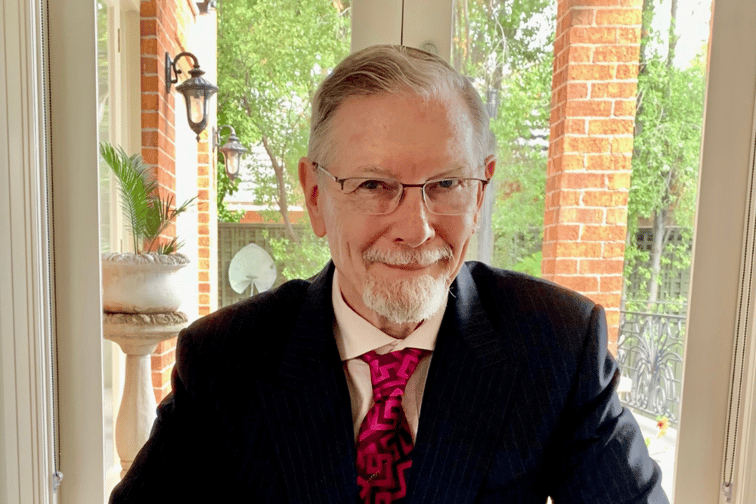

2021 marks two decades since Australia’s worst ever corporate bankruptcy: The $5.3 billion collapse of HIH Insurance. Insurance Business has been approaching a range of industry veterans to get their thoughts on the lasting impacts of this disaster – and now we hear from one more.
Insurance law expert Fred Hawke (pictured) – who featured in IB’s latest glossy magazine Big Interview – is an industry veteran who, like some other astute observers at the time, saw the disaster coming. He also played a role dealing with the fallout.
“In a couple of words: arrogance and under reserving, that’s what brought it [HIH] down. But it was a long time in the running,” said the Clayton Utz consultant and faculty member of the Australian College of Insurance Studies (ACIS).
In a strange coincidence, on the day of the September 11, 2001, attacks on the United States, Hawke was discussing the HIH bailout with officials from the Treasury department.
“Everybody remembers where they were on 9/11 and I remember that I was up in Sydney for a meeting with our firm’s client, the Commonwealth Treasury, to discuss details of some negotiations with the Insurance Council of Australia and various underwriters about the HIH bailout and what subsequently became the HIH policyholder relief scheme,” he said.
“I got up in the morning thinking I’d go to the office for these meetings. Then it was 9/11, of course, and it all didn’t seem as important as we thought it was the day before. So that put it in perspective.”
Hawke has a detailed memory of the two key protagonists in the tale: former HIH chief Ray Williams and former FAI Insurance CEO Rodney Adler, who both spent two and a half years in prison for their central roles in the collapse.
“Ray Williams was originally a workers’ compensation manager at the New South Wales Water Board and he was very good at workers’ comp,” he said.
Hawke said Williams partnered with Michael Payne, a Lloyd’s underwriter, and set up M W Payne Underwriting Agency in the late 1960s which went through various transitions and morphed into HIH.
“If he’d just stuck to doing worker’s comp, which he was very good at and understood very well, HIH would probably still be with us in one form or another and Ray Williams would never have gone to jail,” Hawke noted.
He added that Williams was a very insightful and compassionate workers’ compensation manager.
“He’s not the villain they painted him by any means,” he said. “But it’s a classic hubris, nemesis and catharsis Greek tragedy, really.”
Hawke said Williams branched out very aggressively in the 80s and 90s into general liability, professional indemnity and mainstream public and products liability.
“That’s probably what brought him unstuck because he didn’t understand the dynamics of that business, the way the tails worked,” he explained. “He took on long term liabilities and instead of managing them adequately with reserves he relied on reinsurance.”
He said this allowed him to undercut his competitors because he didn’t have capital tied up in reserves. This business model involved reinsuring out his liabilities.
“It only works as long as the reinsurance is there supporting you and HIH was chronically under reserved, probably all through the 1990s,” Hawke claimed.
Hawke recalls speaking at a conference in 1993 in Canberra to actuaries and regulators about liability insurance. His talk was about claim reserving from the perspective of a claims manager.
“I concluded that the industry as a whole was under reserved,” he said. “Estelle Pearson, the Trowbridge Deloitte actuary [and later the 122nd and final witness to give evidence at the Royal Commission into the HIH collapse] was of the same view.”
Hawke said the general consensus was that there wasn’t enough money being put aside to pay claims in this area.
Read next: Labor attacks PM over HIH collapse
“Of course that made HIH the elephant in the room because they had half the market by that stage and by the time they went down they had between two thirds and three quarters of the Australian liability market,” he said. “So, when they crashed, of course, it stopped the courts and stopped the playgrounds and the sports carnivals and pretty much stopped the country!”
Hawke said, during the 1990s, the position of HIH “was a running joke in liabilities claims management circles.”
When Australia was experiencing a string of corporate collapses during the 1990s, Hawke said HIH always had an argument why it didn’t have to indemnify.
“Whenever we were in a mediation, they either had an argument why they didn’t have to indemnify their policyholder or, if they did have to indemnify, they had an argument why their policyholder in this whole shemozzle was the only one who wasn’t liable,” he laughed.
Hawke said HIH seemed to be hoping that if they waited it out all these liability issues would settle down.
“And for a long time, it worked,” he said.
